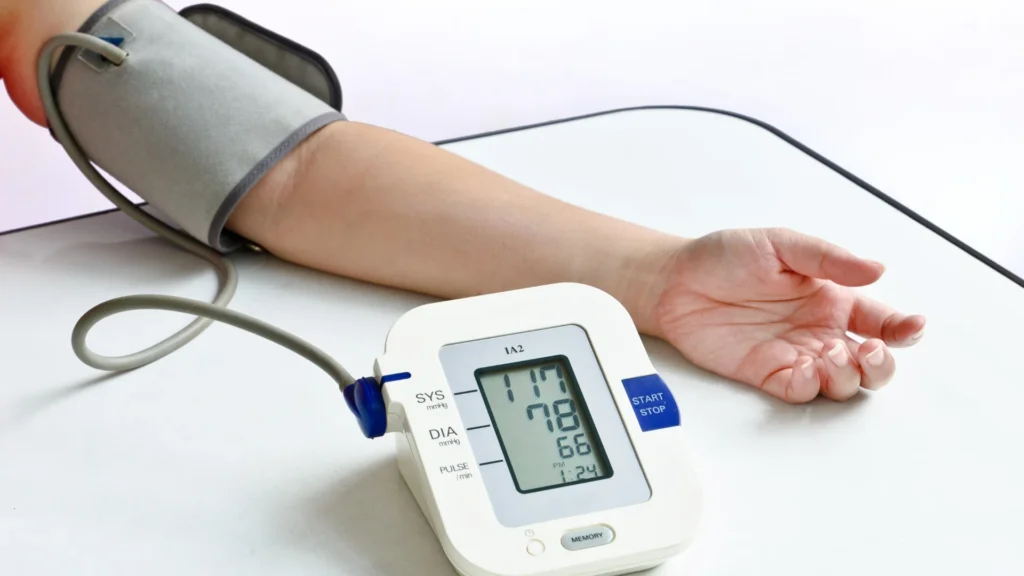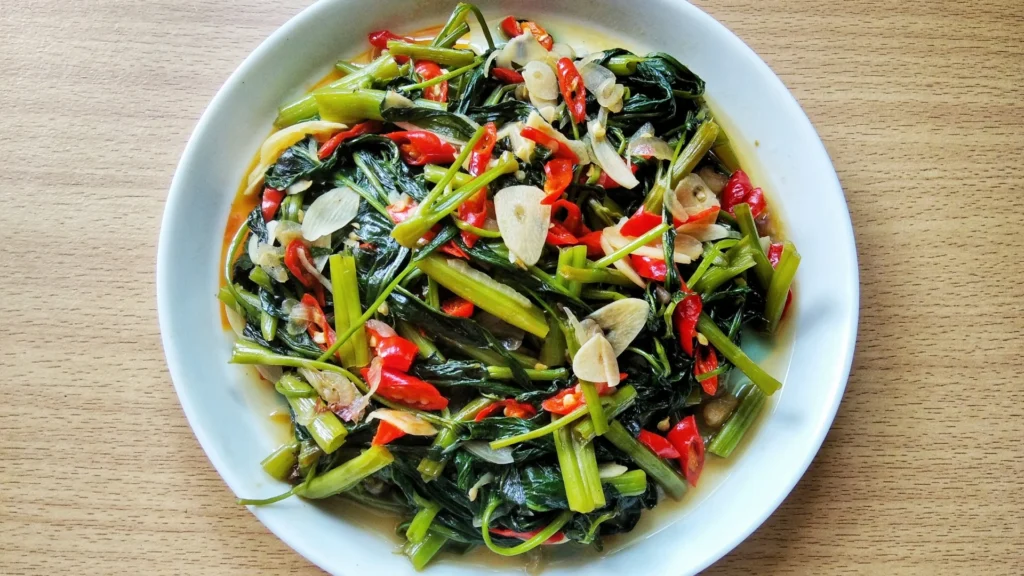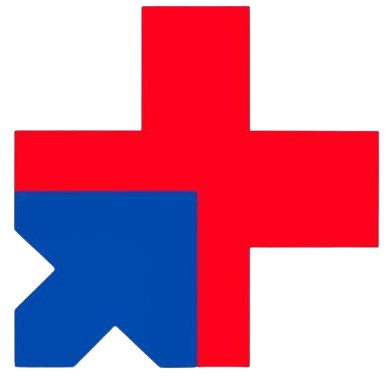High blood pressure, or hypertension, is a common health concern affecting numerous adults worldwide. This condition, often labeled a silent killer, is characterized by the heightened pressure with which your blood pumps throughout your body. It may not typically present any noticeable symptoms, yet its impact on health is significant. Prolonged high blood pressure can harm your blood vessels, boosting the risk of kidney failure, coronary heart disease, and stroke.
But here’s some good news – you can wield a powerful weapon against hypertension through your fork! Your everyday diet plays a pivotal role in maintaining healthy blood pressure levels or managing existing hypertension. This healthy eating guide aims to empower you with knowledge and practical advice on how to eat your way to better numbers and enhanced overall wellness.
As always, this articles serves as a guide. Please consult your family physician for more specified diagnosis.
The Dangers of Untreated High Blood Pressure

When high blood pressure remains unaddressed, it can lead to a multitude of health complications. A silent assailant, hypertension impacts our bodies without any significant warning signs. Without treatment, this condition can wreak havoc on your cardiovascular system.
High Blood Pressure Potential Health Complications
Here are some potential health complications that can arise from untreated high blood pressure:
- Heart disease: High blood pressure can harden arteries, leading to heart attacks or heart failure.
- Stroke: Hypertension contributes to the buildup of plaques in the arteries. When these rupture or clot, it can block blood flow to the brain, resulting in a stroke.
- Kidney damage: Elevated blood pressure can damage the blood vessels in kidneys, impairing their ability to effectively filter toxins from your body.
- Vision problems: Hypertension can strain the vessels in the eyes, potentially leading to vision loss.
Understanding these high blood pressure risks underlines the necessity of managing this condition proactively. In our subsequent sections, we delve into dietary strategies that can help control hypertension naturally.
Dietary Strategies to Lower Your Blood Pressure Naturally

1. Reduce Your Sodium Intake
Salt, a major contributor to high blood pressure, is often a stealthy ingredient in our diets. It’s not just in your salt shaker; it hides in processed foods, ready meals, and even seemingly healthy snacks. To adhere to the dietary guidelines for hypertension, understanding how to navigate sodium intake is key.
Identifying Hidden Sodium Sources
Read Labels
Scan nutrition labels for sodium content. Opt for products with lower sodium levels or those labeled as “low-sodium” or “no salt added.”
Choose Fresh Over Canned
Whenever possible, choose fresh fruits and vegetables over canned options, which often contain added salt for preservation.
Be Sauce-Savvy
Condiments and sauces like soy sauce, ketchup, and salad dressings can be high in sodium. Use sparingly or look for low-sodium versions.
Cooking and Eating Out Smart
Cook at Home
When you prepare meals yourself, you control the amount of salt used. Experiment with herbs and spices like basil, oregano, turmeric, and black pepper to flavor your dishes instead of relying on salt.
Mindful Ordering
When dining out, request that dishes be made with less salt or ask for sauces and dressings on the side to manage how much you consume.
Snack Selection
Healthy Snacking
Replace salty snacks with unsalted nuts, seeds, or slices of fresh fruit and vegetables. Not only do these options have less sodium, but they also provide valuable nutrients.
By meticulously monitoring your sodium intake through these practical approaches within your high blood pressure diet plan, you can take significant strides toward bettering your numbers without sacrificing flavor or enjoyment of food. With each meal crafted thoughtfully and each snack chosen wisely, you’re paving the way to a heart-healthier lifestyle.
2. Choose Nutrient-Dense Foods
To effectively manage your high blood pressure, it’s important to include foods in your diet that are rich in nutrients and low in calories. These foods, known as nutrient-dense foods, can help you control your blood pressure levels and improve your overall health.
Why Nutrient-Dense Foods Matter
Nutrient-rich foods such as whole grains, fruits, and vegetables are packed with dietary fibre, which has been proven to help control hypertension. These foods also contain essential minerals like potassium and magnesium, which assist in maintaining healthy blood pressure.
How to Include More Nutrient-Dense Foods in Your Diet
Here are some strategies for incorporating more fibre-rich food into your meals:
- Swap White for Whole: Replace white bread or pasta with their whole grain equivalents. This change can significantly increase your fibre intake.
- Fruit & Veggie Snacks: Opt for fresh fruits and raw vegetables as snacks instead of reaching for sugary or salty treats.
- Variety is Key: Try to include a variety of fruits and vegetables in your diet. Each type brings different nutrients to the table, offering a well-rounded approach to your high blood pressure diet.
Start Small, Make Gradual Changes
Remember, small changes can make a big difference over time. Start by adding one extra piece of fruit or an additional serving of vegetables to your daily meals and gradually increase from there. Your heart and blood pressure will thank you!
3. Opt for Lean Proteins
Lean proteins are a crucial part of any high blood pressure-friendly diet as they offer the nutrients your heart needs without excess fat and calories. They’re an essential part of the dietary guidelines for hypertension.
What Are Lean Proteins?
Lean proteins are protein sources that are low in fat and calories. Here are some examples of lean proteins:
- Poultry: Chicken and turkey are excellent choices, just be sure to remove the skin to minimize fat intake.
- Seafood: Fish like salmon are not only lean but also packed with heart-healthy omega-3 fatty acids.
- Plant Proteins: Beans, lentils, and tofu provide protein without the added saturated fats found in some meats.
How to Prepare Lean Proteins
Remember, it’s not just about choosing the right protein source; it’s also about how you prepare it. Here are some healthy cooking methods for lean proteins:
- Grilling
- Broiling
- Steaming
These cooking methods help retain the natural flavors of the food without adding extra fat or calories.
Why Are Lean Proteins Important for High Blood Pressure?
When you incorporate lean proteins into your eating plan, you’re taking a significant step toward managing your high blood pressure. Thus, by making these conscious choices, you’re prioritizing your heart health and setting yourself up for success in maintaining better blood pressure numbers.
4. Limit Processed and Fatty Foods
Processed and fatty foods often contain salt, sugar, unhealthy fats, and preservatives—ingredients that can raise your blood pressure. These include fast food, fried items, sugary drinks, and ready-to-eat meals. High sodium intake from processed foods can lead to water retention, causing high blood pressure. Also, these foods are typically high in trans and saturated fats which can increase bad cholesterol levels, leading to hypertension.
Looking to improve your high blood pressure diet? Here are some practical tips:
Prioritize Homemade Meals
Cooking at home allows you to control the ingredients and portion sizes. Swap out processed ingredients with fresh ones whenever possible.
Read Food Labels
Check for sodium content and choose products with lower sodium levels. Be cautious of items labeled ‘low fat’ or ‘reduced fat’, as they may contain added sugars or salt to compensate for flavor.
Opt for Healthier Cooking Methods
Instead of deep-frying or pan-frying, try baking, grilling, steaming or boiling your meals.
Limit Eating Out
When you do dine out, ask for sauces on the side and avoid fried dishes.
Following these dietary guidelines for hypertension can help in reducing fat intake and managing your blood pressure effectively.
Read More: Did You Know These 5 Eye-Opening Facts About Fats?
5. Be Mindful of Your Sugar Consumption
Understanding the connection between sugar intake and high blood pressure is a critical component of dietary guidelines for hypertension. Sugars, particularly those added during processing, can contribute to elevated blood pressure levels as they may lead to weight gain and strain on your heart.
Here are actionable tips for reducing added sugars in your high blood pressure diet:
Read Labels Carefully
Choose products with low amounts of added sugars. Look out for ingredients like corn syrup, fructose, sucrose, or anything ending in ‘-ose’.
Opt for Natural Sweeteners
Use honey, maple syrup, or agave in moderation instead of white sugar; they provide sweetness and some nutrients.
Fruit Over Candy
Satisfy your sweet tooth with fresh fruits instead of sugary snacks. The fiber in fruit also helps control blood sugar levels.
Modify Recipes
When baking or cooking, cut the sugar called for in your recipes by one-third to one-half.
Beverage Choices Matter
Drink water, herbal teas, or diluted fruit juices instead of soft drinks and flavored lattes which are often high in added sugars.
Adhering to these suggestions can help you manage your sodium intake and support your efforts in high blood pressure control without feeling deprived of life’s sweeter moments.
Read More: Sugar Rush: 5 Insights Into The World Of Sweeteners
6. Watch Your Weight
Your weight plays a crucial role in your blood pressure levels. Being overweight or obese increases your chances of developing hypertension. This is because carrying extra weight puts additional strain on your heart, making it work harder to pump blood. It can also lead to insulin resistance, which further elevates your blood pressure.
To incorporate weight management into your high blood pressure diet, here are some healthy strategies to consider:
- Prioritize Whole Foods: Opt for unprocessed foods that are low in calories but packed with nutrients. These will help you feel full while consuming fewer calories.
- Control Portion Sizes: Use smaller plates and be mindful of how much you eat. When dining out, you can also share meals or save half for later.
- Regular Monitoring: Keep track of your weight through regular check-ins. This is essential for long-term weight management.
- Balanced Meals: Make sure each meal includes a combination of fruits, vegetables, lean proteins, and whole grains. This will support both satiety and nutrition.
By following dietary guidelines for hypertension such as reducing sodium intake and choosing heart-healthy foods, you’ll not only prevent high blood pressure but also achieve effective weight management for overall health improvement.
Read More: Running and Belly Fat: And how to Lose Weight
Seeking Professional Guidance

Engaging with a healthcare team offers a strategic advantage in the battle against high blood pressure. Consulting a healthcare professional for high blood pressure provides tailored advice, grounded in medical expertise and personalized to your unique health profile. Here’s how enlisting their help makes a tangible difference:
Personalized Assessment
A healthcare provider can evaluate your specific circumstances, considering factors like age, genetics, lifestyle, and other health conditions.
Medication Management
They can prescribe the right medication and dosage while monitoring its effectiveness and making necessary adjustments.
Nutritional Expertise
Dietitians or nutritionists offer guidance on creating meal plans that accommodate your preferences while targeting blood pressure reduction.
Ongoing Support
Regular appointments ensure continued support, helping you navigate challenges and celebrate improvements.
By working collaboratively with professionals, you gain insights that empower you to make informed choices about your health. This partnership can pave the way for sustainable management of hypertension through expert guidance and motivational support.
Incorporating Regular Physical Activity for Better Blood Pressure Control

Pairing a nutritious diet with regular exercise creates a powerful duo for hypertension management. Exercise aids in maintaining a healthy heart and circulatory system, making it less work to pump blood. This efficiency can lead to lower blood pressure over time. Here are some ways physical activity supports this process:
1. Strengthens the heart
A stronger heart can pump more blood with less effort. As your heart muscle becomes more efficient, the force on your arteries decreases, lowering blood pressure.
2. Improves arterial health
Exercise increases the production of nitric oxide, which helps blood vessels maintain their elasticity, reducing blood pressure.
3. Aids weight management
By burning calories and building muscle mass, exercise helps manage weight—a key factor in controlling blood pressure.
For those new to exercise or with existing hypertension, it’s wise to start slow and choose activities that are manageable but effective such as walking, cycling, or swimming. Always check with a healthcare provider before starting any new exercise regimen.
Read More: Running vs Walking: Which Is Better for Weight Loss?
Making Healthy Eating a Way of Life

Committing to lifestyle changes is essential in the long-term adherence to a high blood pressure diet. But how do you stick to these healthy eating habits when faced with social gatherings or busy schedules? Here are some tips:
Plan Ahead
If you know you have a social event, try to find out what food will be available and make choices that fit into your diet plan. If you’re unsure, don’t hesitate to bring your own nutritious dish.
Prepare Meals in Advance
This can be a lifesaver when your schedule gets hectic. Dedicate some time each week to prepare healthy meals and snacks that you can quickly grab when needed.
Choose Wisely When Eating Out
Opt for restaurants that offer healthier options and don’t shy away from asking for alterations to dishes to suit your dietary needs.
Stay Hydrated
Often, we confuse thirst for hunger. Drink plenty of water throughout the day to keep this confusion at bay.
Remember, it’s not about perfection but consistency. You might have days where you deviate from your planned diet, but don’t let that discourage you. Just get back on track the next meal. The key is making these healthy eating habits part of your everyday routine.
Read More: Did You Know These 7 Amazing Benefits of Drinking Milk?
Delicious and Nutritious Recipes for Lowering Blood Pressure
Embracing a high blood pressure-friendly diet doesn’t mean giving up on flavor. Here are a few simple, kid-friendly recipes that are both delicious and support healthy blood pressure levels.
1. Banana Oat Pancakes
Packed with potassium-rich bananas and heart-healthy oats, these pancakes are a great way to start the day.
Ingredients:
- Bananas
- Rolled oats
- Eggs
- Cinnamon
Instructions:
- Blend all ingredients together to create batter.
- Cook on a non-stick pan for fluffy pancakes.
2. Veggie-loaded Minestrone Soup
This classic Italian soup is brimming with fiber-rich vegetables and whole grains.
Ingredients:
- Carrots
- Celery
- Canned tomatoes
- Kidney beans
- Whole grain pasta
- Vegetable broth
Instructions:
- Sauté vegetables in olive oil before adding the broth, tomatoes, beans and pasta.
- Simmer until all ingredients are tender.
3. Baked Fish Tacos
Lean proteins like fish are an excellent choice for blood pressure management.
Ingredients:
- White fish fillets
- Whole grain tortillas
- Avocado slices
- Shredded lettuce
Instructions:
- Bake the fish in the oven till it’s flaky.
- Assemble tacos using tortillas, baked fish and fresh toppings.
These recipes show that eating healthily can be a tasty affair too! Keep exploring more high blood pressure-friendly recipes to keep your meals varied and enjoyable.
Conclusion
High blood pressure tips extend beyond medication and regular check-ups. A significant aspect of managing hypertension lies in our everyday choices, particularly our diet. Eating for better numbers should not be an afterthought but a part of your lifestyle.
Nutritious meals can be delicious, as seen in the kid-friendly recipes shared earlier. It is essential to remember that reducing sodium intake, choosing nutrient-dense foods, opting for lean proteins, limiting processed and fatty foods, being mindful of sugar consumption, and maintaining a healthy weight all contribute towards healthier blood pressure levels.
Every little step towards a healthier diet counts in this journey. Start small, start now! With determination and consistency, you’ll soon see the impact of these dietary changes reflected in your blood pressure readings.
Prioritize nutritious eating today, because your health is worth it!
FAQs (Frequently Asked Questions)
What is the impact of high blood pressure on health?
High blood pressure can lead to various health complications, including heart disease, stroke, kidney damage, and other serious conditions. It is important to manage and control high blood pressure to reduce the risk of these health issues.
How does diet play a key role in managing high blood pressure?
A healthy diet can significantly contribute to managing high blood pressure. By following dietary strategies aimed at lowering blood pressure naturally, individuals can reduce their sodium intake, choose nutrient-dense foods, opt for lean proteins, limit processed and fatty foods, be mindful of sugar consumption, and manage their weight effectively.
What are some practical tips for reducing sodium intake in meals and snacks?
To reduce sodium intake, individuals can try flavoring their food with herbs and spices instead of salt, reading food labels to identify high-sodium products, avoiding processed and packaged foods, choosing fresh ingredients, and cooking meals at home to have better control over salt content.
Why is it important to choose nutrient-dense foods for managing high blood pressure?
Nutrient-dense foods such as fruits, vegetables, whole grains, and fiber-rich foods provide essential vitamins and minerals while being lower in calories. These foods can help in lowering blood pressure naturally and supporting overall heart health.
How does excessive sugar consumption relate to elevated blood pressure levels?
Excessive sugar intake can lead to weight gain and obesity, which are risk factors for high blood pressure. Additionally, consuming too much sugar may contribute to insulin resistance and higher levels of inflammation in the body, both of which can impact blood pressure.
Why is it important to seek professional guidance in managing high blood pressure?
Seeking professional guidance allows individuals to receive personalized advice on managing their high blood pressure effectively. Healthcare professionals can provide tailored recommendations based on an individual’s unique health status and help monitor progress over time.


